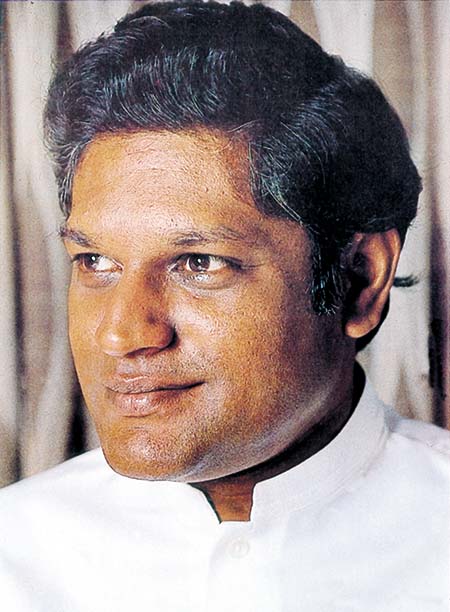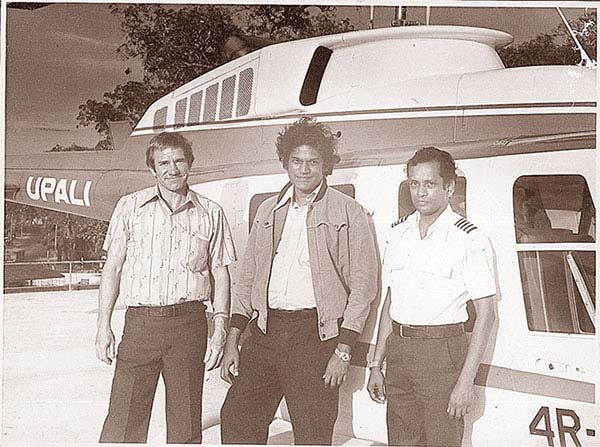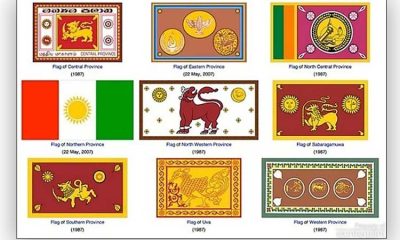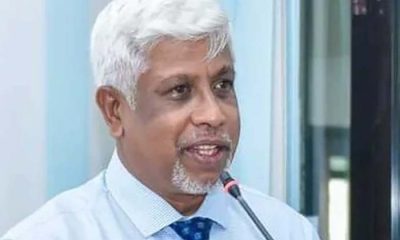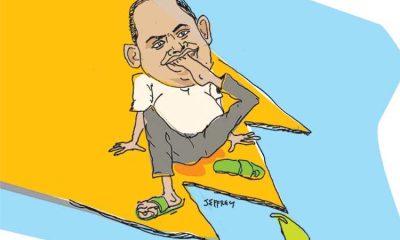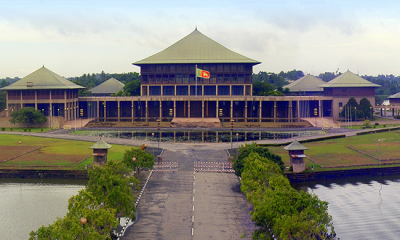Features
Upali Wijewardene – an enigma and a legend
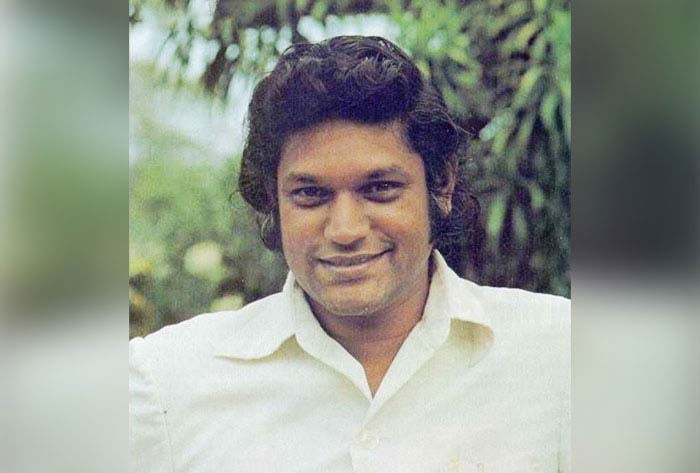
by Ajith Samaranayake
Between Sri Lanka’s 35th independence anniversary and his birthday Upali Wijewardene boarded his executive Lear Jet at Kuala Lumpur and in a single fateful flash became solidified into an enigma and a legend. The flamboyant tycoon who had left with five others never arrived in Colombo. Somewhere over the Straits of Malacca the plane disappeared with not a clue or a trace.
The drama held the nation in its grip for months. Newspapers reported little else except the mystery of the disappearance. Speculation spread like a bush fire and as the days passed with no news the most fantastic cloak and dagger theories were spun. People gathered by the roadside to listen to the radio news bulletins and strangers become friends as they speculated about the fate of a man who was one of Sri Lanka’s most beloved sons.
Destined
For Philip Upali Wijewardene it was a strangely fitting apotheosis. It was as if his whole colourful career was destined for this final peak, this sudden and dramatic exit just as he was in the very centre of the public eye, a glorious accession to the heights of myth and legend.
For Upali’s life was of the kind which dreams are made of. Though born to one of the most distinguished families in Colombo and into a charmed circle which constituted Sri Lanka’s ruling elite, Upali had carved out a career in an area totally out of synch with that class. He did not take to law or medicine or pursue an academic career as the more favoured sons of this affluent, anglicised and genteel elite were wont to do. Neither did he take to politics.
On the contrary with nothing much except the most rudimentary capital and confidence in his own abilities he began a confectionery industry and business in a part of his ancestral home where such brushes with crude commerce had never before taken place. Down the years this fledgling business he was able to build and expand into a mighty conglomerate, Sri Lanka’s only multinational, until he acquired a worldwide reputation as Sri Lanka’s leading entrepreneur, an enterprising and shrewd businessman who could hold his own with the best of them in New York, London or Bonn.
But by February 13, that fateful day which again confirmed the hold of superstition, Upali’s mind was not preoccupied with his businesses alone. For about two years politics had replaced business as his central passion. The man who had conquered the commanding heights of commerce now wanted to conquer the commanding heights of politics. And like everything else he did, he wanted to do it soon.
In 1981 he had founded The Island and the Divaina which had immediately become the eye of the political storm. Their vigorous reporting and comments which did not spare even some of the most powerful politicians of the ruling UNP came as a stirring antidote to the flabby, tame-cat Lake House press which was then dominating journalism.
Readers lapped up the new offerings avidly. Upali Wijewardene’s name was bandied about freely in Parliament. He made no secret of the fact that he wanted to enter Parliament and become finance minister which raised the hackles of the Finance Minister, the fiercely combative Mr. Ronnie de Mel. It became quite commonplace for the bespectacled and owlish Minister to hurl fearsome thunderbolts at the absent Upali in Parliament while we parliamentary reporters of The Island in the absence of our owner became surrogates for the ministerial fury and the embarrassed focus of the eyes of our colleagues in the crowded press gallery of the old Parliament by the sea.
Following year
The following year was to be one of the most crucial in Sri Lanka’s politics. President Jayewardene, Upali’s cousin and mentor, called an early Presidential Election, and in the absence of his normal rival Mrs. Sirima Bandaranaike, incapacitated by her loss of civic rights, easily beat former Minister Hector Kobbekoduwa fielded by an SLFP in tatters.
Then claiming that there was a Naxalite conspiracy to assassinate him if he had lost and claiming further that if General Elections were held on schedule a sizeable number of these horrendous Naxalites would enter Parliament he held a Referendum which the UNP won amidst widespread claims of thuggery, ballot-rigging, etc.
Anyway Upali was loyally by Jayewardene’s side during both campaigns, campaigning vigorously for the UNP at Kamburupitiya, his mother’s ancestral village, for which he had done much through his Ruhunu Udanaya programme for improving the conditions of villages in the South. The south he considered his heartland and it was from the South that he sought to enter Parliament for which there were vacancies even as he boarded his Lear Jet that day in the Malaysian capital.
Elections
For what had happened was that Jayewardene had asked for and received the resignations of 17 members of Parliament who had lost their electorates at the Referendum. Parliament had just been convened for the new session of the Second Jayewardene Presidency and the guns had boomed and the Jayamangala Gathas had been chanted. As that irrepressible Communist MP, the much lamented late Sarath Muttettuwegama quipped, “There was a 21-gun salute only the other day. And now 17 of you are gone.” Among the vacancies were Kamburupitiya and Devinuwara either of which Upali was planning to contest.
This was the backdrop to Upali’s destiny which during the next few weeks would hold the nation in its grip and virtually bring the country to a standstill. Among those on board with Upali in the plane which had left Malaysia’s Subang Airport at 8.41 p.m. on February 13 were Mr. Ananda Pelimuhandiram, the whiz kid Financial Director of the Upali Group and one of his most trusted lieutenants, a Malaysian lawyer Mr. S. M. Ratnam and Steward Mr. A. Senanayake. The jet was piloted by Capt. Noel Anandappa with Mr. Sidney de Zoysa as co-pilot.
They were to have reached Colombo by 9.45 p.m. that night but they did not come. Neither did they come the next day. By the morning of Monday February 14 Colombo was agog with the news. Soon it spread everywhere and the people paused in awe and wonderment as the enormity of the event sank into the public consciousness. Upali Wijewardene had mysteriously vanished with his three companions and two navigators leaving not a clue behind somewhere in that vast and empty night sky over Malaysia.
On Tuesday February 15 The Island, ‘Upali’s beloved flagship, broke the news soberly. Over a banner headline “Plane carrying Upali Wijewardene feared lost”. it told its readers that the jet had lost radio contact with the airport just 15 minutes after take off. The last message had said that the aircraft was at an altitude of 27,000 feet. Indonesia and Malaysia had launched a joint air and sea search operation but had failed to find any debris of an aircraft.
At The Island that Monday it was like something out of a novel by Kafka. We were in a daze. Was it possible that six people on board an aircraft in this miraculous age of technology could disappear without a trace? People huddled about the corridors talking, absorbing the news only slowly while the telephones rang incessantly as the other newspapers were getting in touch with us for the latest. But we could do little to shed light on the mystery. The most intensive search by several governments could not yield a single clue. These headlines from the papers which followed convey the flavour of those bizarre days.
February 16 —Air, sea search for Upali Wijewardene continues. Aussie plane may have seen missing jet
February 17— Three planes with sophisticated equipment comb the ocean. No results yet from seven-notion search
A flare and a weak signal but search proves negative. Search for missing plane in Andaman Island.
February 18 – Search for missing jet narrows to coastal area round Sumatra. Lear Jet reps suspect sabotage.
Wreckage
On the same day something happened which could well have been the tragic denouement of the whole drama but which was aborted at the last moment. On the afternoon of that Friday a Reuter report was received that the wreckage of the private jet and several bodies had been found off the Indonesian island of Sumatra.
I was in Fort at the time having taken a brief respite from the bleak house at Bloemendhal Road. With me at one of Fort’s many hospitable hostelries where we were drinking more than usual was Joe Segera, the Daymon Runyonesque Lake House story teller and chronicler of Canal Row and Chandra S. Perera, the always nattily-dressed NBC reporter and man about town.
Slowly the story spread through Canal Row, Hospital Street and Baillie Street and people reacted with shock and grief. More pints were drunk and our senses numbed somewhat by what we had taken Chandra who had known Upali in London and had common friends with him and I repaired to Bloemendhal Road.
There we were told by Editor Vijitha Yapa who had worked frenziedly during those days to bring out the paper in the midst of the tension that Reuter had denied the story within the hour. The next day The Island reported that it had been besieged with telephone calls following the story breaking. Reuters, Hong Kong had been contacted and The Island told ‘The story will be held back’, it reported.
And so the days passed. More headlines.
February 19 — Divers too join search near Sumatra. Another frustrating day of search
February 21 — Top Sri Lanka cops arrive in KL for investigation
Sabotage not ruled out
February 22 — Wheel found by fishermen did come from Lear Jet. Oil slick found near Kumana not from Lear Jet. February 23 —Minesweepers deployed in Indonesia today to find Jet Identification of Lear Jet wheel narrows search area. February 24 — If Lear Jet wheel was spare explosion may have occurred
February 25 —Fishermen cleared: Minesweeper move into find jet. There was no black box on missing Lear Jet. February 26 — PM answers questions on Upali
Unsolved
And so that unusually short month petered out sadly with the riddle unsolved. On the last day of February The Island headline was ‘Lalith thinks sabotage is likely cause of crash’. Under the by line of Lasantha Wickremetunge it said that the then Minister of Trade and Shipping Lalith Athulathmudali who had returned from Indonesia on February 26 as President Jayewardene’s special envoy had said that there were three possibilities for the disappearance of which the most likely was sabotage. Of the other possibilities, pilot error and a defect in the aircraft were most unlikely.
Mr. Athulathmudali also stressed that his investigations had shown that Mr. Wijewardene had no commercial enemies. In a box in the same story the paper reported ‘Temporary halt to search’ saying that since the area searched by the minesweeper had yielded no clues the search; was being abandoned and would resume if fresh evidence is uncovered. Only a single wheel — the right outbourne wheel — of the whole aircraft was found.
And so ended a drama which had electrified the country that cruel month of February and still continues to bemuse the people. What happened to Upali? is still the most popular question asked by friends and acquaintances from anybody connected with the Upali Group. Upali fascinated the people in life and now that he is no longer to be found, lost somewhere in the vast ethereal emptiness, he has become a legend and a cult which continues to enthral the people.
What would have happened if he had arrived in Colombo that February night with politics entering a fresh phase and plunged into what would have undoubtedly been a stormy political career will remain one of the most fascinating “Ifs”, of our contemporary political history.
Enigmatic fate
But what is clear is that the enigmatic fate of the man who built a commercial empire from nothing and captured a nation’s heart will always be looked upon with wonderment by them. Whether Upali could have stormed the commanding heights of politics by using the methods of advertising and self-promotion which he so successfully used in his business enterprises we will never know. Yet, like Icarus who flew but went too close to the sun so that his wings melted, the strange and fascinating destiny of Upali Wijewardene, Sri Lanka’s first tycoon who also chose the sun as his symbol, will always be a glorious legend of our times.
Newspaper
Looking back across ten more eventful years several memories crowd the mind. The memory which stands out most prominently is that of the collective effort to bring out the paper in the midst of the most terrible tension which could have pervaded any newspaper office. Editor Vijitha Yapa who was a loyal friend of Upali had to battle his feelings while he held the fort in the news room keeping in constant touch with the latest developments and answering the questions of local and foreign journalists.
For him and Deputy Editor and News Editor Gamini Weerakoon it was a trial of endurance which they magnificently stood up to. Looking at the paper to which thousands turned during that fateful month for news of its proprietor there is no sign of the almost unbearable tension with which we were working.
Upali Mahattaya
Several days on end we did not go home and the bleak reaches of the night were spent on the bare office tables with the late K. C. Kulasinghe as my companion. Or some nights would be spent in the grimy digs of D. B. S. Jeyaraj located quite close to the Premil Sports Club which was often the hub of our social life where the owner, the late Rajendra Mudalali, would approach us sombrely, always dressed in spotless white sarong and shirt and inquire ‘Any news of Upali Mahattaya?’ And in the morning the sun would rise over the splendid dome of St. Lucia’s Cathedral and we would search the vast sky for an answer.
(This article first appeared in a supplement to mark the 10th anniversary of the disappearance of Upali Wijewardene and party on Feb 13, 1993)
Features
US foreign policy-making enters critical phase as fascist threat heightens globally
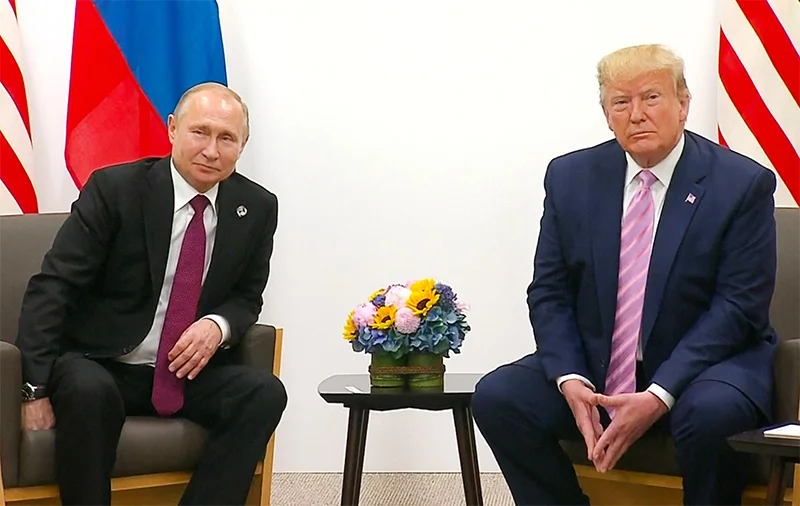
 It could be quite premature to claim that the US has closed ranks completely with the world’s foremost fascist states: Russia, China and North Korea. But there is no denying that the US is breaking with tradition and perceiving commonality of policy orientation with the mentioned authoritarian states of the East rather than with Europe and its major democracies at present.
It could be quite premature to claim that the US has closed ranks completely with the world’s foremost fascist states: Russia, China and North Korea. But there is no denying that the US is breaking with tradition and perceiving commonality of policy orientation with the mentioned authoritarian states of the East rather than with Europe and its major democracies at present.
Increasingly, it is seemingly becoming evident that the common characterization of the US as the ‘world’s mightiest democracy’, could be a gross misnomer. Moreover, the simple fact that the US is refraining from naming Russia as the aggressor in the Russia-Ukraine conflict and its refusal to perceive Ukraine’s sovereignty as having been violated by Russia, proves that US foreign policy is undergoing a substantive overhaul, as it were. In fact, one could not be faulted, given this backdrop, for seeing the US under President Donald Trump as compromising its democratic credentials very substantially.
Yet, it could be far too early to state that in the traditional East-West polarity in world politics, that the US is now squarely and conclusively with the Eastern camp that comprises in the main, China and Russia. At present, the US is adopting an arguably more nuanced approach to foreign policy formulation and the most recent UN Security Council resolution on Ukraine bears this out to a degree. For instance, the UN resolution in question reportedly ‘calls for a rapid end to the war without naming Russia as the aggressor.’
That is, the onus is being placed on only Ukraine to facilitate an end to the war, whereas Russia too has an obligation to do likewise. But it is plain that the US is reflecting an eagerness in such pronouncements to see an end to the Ukraine conflict. It is clearly not for a prolongation of the wasting war. It could be argued that a negotiated settlement is being given a try, despite current international polarizations.
However, the US could act constructively in the crisis by urging Russia as well to ensure an end to the conflict, now that there is some seemingly friendly rapport between Trump and Putin.
However, more fundamentally, if the US does not see Ukraine’s sovereignty as having been violated by Russia as a result of the latter’s invasion, we are having a situation wherein the fundamental tenets of International Law are going unrecognized by the US. That is, international disorder and lawlessness are being winked at by the US.
It follows that, right now, the US is in cahoots with those powers that are acting autocratically and arbitrarily in international politics rather than with the most democratically vibrant states of the West, although a facile lumping together of the US, Russia and China, is yet not possible.
It is primarily up to the US voting public to take clear cognizance of these developments, draw the necessary inferences and to act on them. Right now, nothing substantive could be done by the US voter to put things right, so to speak, since mid-term US elections are due only next year. But there is ample time for the voting public to put the correct perspective on these fast-breaking developments, internationally and domestically, and to put their vote to good use in upcoming polls and such like democratic exercises. They would be acting in the interest of democracy worldwide by doing so.
More specifically it is up to Donald Trump’s Republican voter base to see the damage that is being done by the present administration to the US’ standing as the ‘world’s mightiest democracy’. They need to bring pressure on Trump and his ‘inner cabinet’ to change course and restore the reputation of their country as the foremost democracy. In the absence of such action it is the US citizenry that would face the consequences of Trump’s policy indiscretions.
Meanwhile, the political Opposition in the US too needs to get its act together, so to speak, and pressure the Trump administration into doing what is needed to get the US back to the relevant policy track. Needless to say, the Democratic Party would need to lead from the front in these efforts.
While, in the foreign policy field the US under President Trump could be said to be acting with a degree of ambivalence and ambiguity currently, in the area of domestic policy it is making it all to plain that it intends to traverse a fascistic course. As has been proved over the past two months, white supremacy is being made the cardinal principle of domestic governance.
Trump has made it clear, for example, that his administration would be close to ethnic chauvinists, such as the controversial Ku Klux Klan, and religious extremists. By unceremoniously rolling back the ‘diversity programs’ that have hitherto helped define the political culture of the US, the Trump administration is making no bones of the fact that ethnic reconciliation would not be among the government’s priorities. The steady undermining of USAID and its main programs worldwide is sufficient proof of this. Thus the basis has been adequately established for the flourishing of fascism and authoritarianism.
Yet, the US currently reflects a complex awareness of foreign policy questions despite having the international community wondering whether it is sealing a permanent alliance with the main powers of the East. For instance, President Trump is currently in conversation on matters in the external relations sphere that are proving vital with the West’s principal leaders. For example, he has spoken to President Emmanuel Macron of France and is due to meet Prime Minister Keir Starmer of the UK.
Obviously, the US is aware that it cannot ‘go it alone’ in resolving currently outstanding issues in external relations, such as the Ukraine question. There is a clear recognition that the latter and many more issues require a collaborative approach.
Besides, the Trump administration realizes that it cannot pose as a ‘first among equals’, given the complexities at ground level. It sees that given the collective strength of the rest of the West that a joint approach to problem solving cannot be avoided. This is particularly so in the case of Ukraine.
The most major powers of the West are no ‘pushovers’ and Germany, under a possibly Christian Democratic Union-led alliance in the future, has indicated as much. It has already implied that it would not be playing second fiddle to the US. Accordingly, the US is likely to steer clear of simplistic thinking in the formulation of foreign policy, going forward.
Features
Clean Sri Lanka – hiccups and remedies
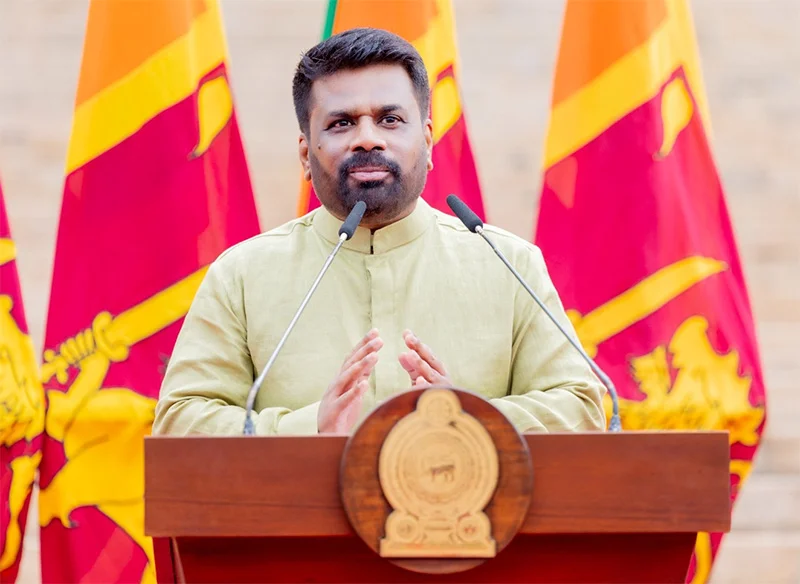
by Upali Gamakumara,
Upali.gamakumara@gmail.com
The Clean Sri Lanka (CSL) is a project for the true renaissance the NPP government launched, the success of which would gain world recognition. It is about more than just cleaning up places. Its broader objectives are to make places attractive and happy for people who visit or use services in the country, focusing more on the services in public institutions and organisations like the SLTB. Unfortunately, these broader objectives are not apparent in its theme, “Clean Sri Lanka,” and therefore there is a misconception that keeping the environment clean is the main focus.
People who realise the said broader objectives are excited about a cleaner Sri Lanka, hoping the President and the government will tackle this, the way they are planning to solve other big problems like the economy and poverty. However, they do not see themselves as part of the solution.
From the management perspective, the CSL has a strategic plan that is not declared in that manner. When looking at the government policies, one can perceive its presence, the vision being “A Prosperous Nation and a Beautiful Life,” the mission “Clean Sri Lanka” and the broader objectives “a disciplined society, effective services, and a cleaner environment.” If the government published these as the strategy, there would have been a better understanding.
Retaining the spirit and expectations and continuing the ‘Clean Sri Lanka’ project is equally important as much as understanding its deep idea. For this, it needs to motivate people, which differs from those motivators that people push to achieve selfish targets. The motivation we need here is to evolve something involuntarily, known as Drivers. Drivers push for the survival of the evolution or development of any entity. We see the absence of apparent Drivers in the CSL project as a weakness that leads to sporadic hiccups and free flow.
Drivers of Evolution
Drivers vary according to the nature of envisaged evolution for progress. However, we suggest that ‘the force that pushes anything to evolve’ would fit all evolutions. Some examples are: ‘Fitting to survival’ was the driver of the evolution of life. Magnetism is a driver for the unprecedented development of physics – young Einstein was driven to enquire about the ‘attraction’ of magnets, eventually making him the greatest scientist of the 20th century.
Leadership is a Driver. It is essential but do not push an evolution continually as they are not sprung within a system involuntarily. This is one of the reasons why CSL has lost the vigour it had at its inception.
CSL is a teamwork. It needs ‘Drives’ for cohesion and to push forward continually, like the Quality Improvement Project of the National Health Service (NHS) in England. Their drivers are outlined differently keeping Aims as their top driver and saying: Aims should be specific and measurable, not merely to “improve” or “reduce,” engage stakeholders to define the aim of the improvement project and a clear aim to identify outcome measures.
So, we think that CSL needs Aims as defined by NHS, built by stakeholder participation to help refine the project for continuous evolution. This approach is similar to Deming’s Cycle for continual improvement. Further, two more important drivers are needed for the CSL project. That is Attitudinal Change and Punishment. We shall discuss these in detail under Psychoactive Environment (pSE) below.
Aside from the above, Competition is another driver in the business world. This helps achieve CSL objectives in the private sector. We can see how this Driver pushes, with the spread of the Supermarket chains, the evolution of small and medium retail shops to supermarket level, and in the private banks and hospitals, achieving broader objectives of CSL; a cleaner environment, disciplined behaviuor, efficient service, and the instillation of ethics.
The readers can now understand the importance of Drivers pushing any project.
Three Types of Entities and Their Drives
We understand, that to do the transformation that CSL expects, we need to identify or adopt the drivers separately to suit the three types of entities we have in the country.
Type I entities are the independent entities that struggle for their existence and force them to adopt drivers involuntarily. They are private sector entities, and their drivers are the commitment of leadership and competition. These drivers spring up involuntarily within the entity.
Type II are the dependent entities. To spring up drivers of these entities commitment of an appointed trustee is a must. Mostly in state-owned entities, categorized as Boards, Authorities, Cooperations, and the like. Their drivers do not spring up within or involuntarily unless the leader initiates. The Government of a country also falls into this type and the emergence of drivers depends on the leader.
Type III entities have neither independent nor dependent immediate leader or trustee. They are mostly the so-called ‘Public’ places like public-toilets, public-playgrounds, and public-beaches. No team can be formed as these places are open to any, like no-man-land. Achieving CSL objectives at these entities depends on the discipline of the public or the users.
Clean Sri Lanka suffers the absence of drivers in the second and third types of entities, as the appointed persons are not trustees but temporary custodians.
The writer proposes a remedy to the last two types of entities based on the theory of pSE explained below.
Psychoactive Environment (pSE) –
The Power of Customer Attraction
Research by the writer introduced the Psychoactive Environment (pSE) concept to explain why some businesses attract more customers than others who provide the same service. Presented at the 5th Global Conference on Business and Economics at Cambridge University in 2006, the study revealed that a “vibe” influences customer attraction. This vibe, termed pSE, depends on Three Distinct Elements, which can either attract or repel customers. A positive pSE makes a business more attractive and welcoming. This concept can help develop Drivers for Type II and III entities.
pSE is not an all-inclusive solution for CSL, but it lays the foundation for building Drivers and motivating entities to keep entrants attractive and contented.
The structure of the pSE
The three distinct Elements are the Occupants, Systems, and Environment responsible for making a pSE attractive to any entity, be it a person, institution, organization, or county. Each of these elements bears three qualities named Captivators. These captivators are, in simple terms, Intelligent, Nice, and Active in their adjective forms.
pSE theorizes that if any element fails to captivate the entrant’s mood by not being Intelligent, Nice, or Active, the pSE becomes negative, repelling the entrant (customer). Conversely, the positive pSE attracts the entrants if the elements are Intelligent, Nice, and Active.
For example, think person who comes to a Government Office for some service. He sees that the employees, service, and environment are intelligent, nice, and active, and he will be delighted and contented. He will not get frustrated or have any deterioration in national productivity.
The Significance of pSE in CSL
The Elements and the Captivators are universal for any entity. Any entity can easily find its path to Evolution or Progress determined by these elements and captivators. The intangible broader objectives can be downsised to manageable targets by pSE. Achievements of these targets make the entrants happy and enhance productivity – the expectation of Clean Sri Lanka (CSL).
From the perspective of pSE, now we can redefine the Clean Sri Lanka project thus:
To make the Elements of every entity in Sri Lanka: intelligent, Nice, and Active.
How Would the pSE be A Remedy for The Sporadic Hiccups?
We have seen two possible reasons for sporadic setbacks and the discontinuity of some projects launched by the CSL. They are:
The absence of involuntary Drivers for evolvement or progress
Poor attitudes and behaviors of people and leaders
Remedy for the Absence of Drivers
Setting up a system to measure customer or beneficiary satisfaction, and setting aims can build Drivers. The East London NHS principles help build the Aims that drive type II & II entities. The system must be designed to ensure continual improvement following the Deming Cycle. This strategy will create Drivers for Type I & II entities.
This process is too long to explain here therefore we refrain from detailing.
Attitudinal Change
The most difficult task is the attitudinal and behavioural change. Yet it cannot be postponed.
Punishment as a strategy
In developed countries, we see that people are much more disciplined than in the developing countries. We in developing countries, give credit to their superior culture, mitigating ours as rudimental. The long experience and looking at this affair from a vantage point, one will understand it is not the absolute truth. Their ruthless wars in the past, rules, and severe punishment are the reasons behind this discipline. For example, anyone who fails to wear a car seatbelt properly will be fined 400 AUD, nearly 80,000 LKR!
The lesson we can learn is, that in Sri Lanka, we need strong laws and strict punishment together with a type of strategic education as follows.
Psychological Approach as a Strategy
The psychological theory of attitude formation can be used successfully if some good programmes can be designed.
All attitude formations start with life experience. Formed wrong or negative attitudes can be reversed or instilled with correct attitudes by exposure to designed life experiences. The programmes have been developed using the concepts of Hoshin Kanri, Brainstorming, Cause-and-Effect analysis, and Teamwork, in addition to London NTS Quality Improvement strategies.
The experience and good responses we received for our pSE programs conducted at several institutions prove and have built confidence in our approach. However, it was a time, when governments or organisations did not pay much attention to cultural change as CSL expects in the country.
Therefore, we believe this is a golden opportunity to take the CSL supported by the pSE concept.
Features
Visually impaired but ready to do it their way
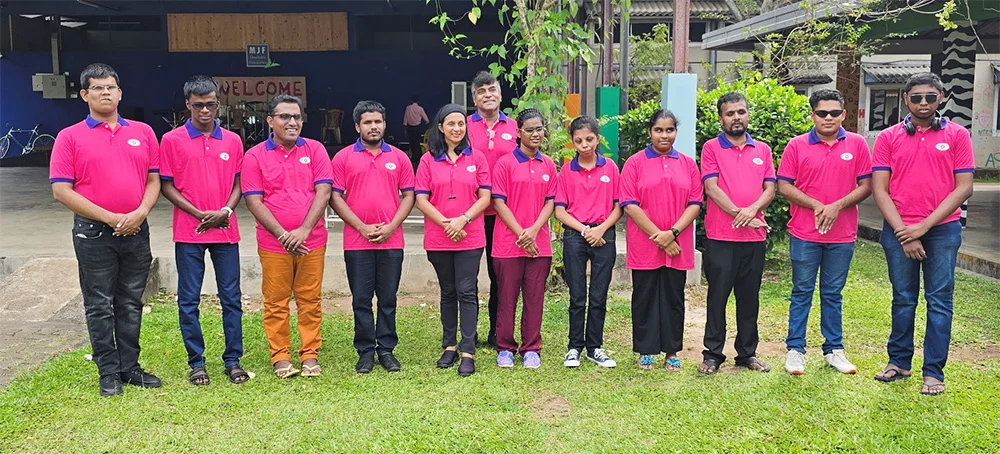
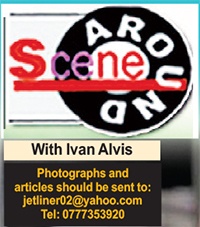 Although they are visually impaired youngsters, under the guidance of renowned musician Melantha Perera, these talented individuals do shine bright … hence the name Bright Light.
Although they are visually impaired youngsters, under the guidance of renowned musician Melantha Perera, these talented individuals do shine bright … hence the name Bright Light.
Says Melantha: “My primary mission is to nurture their talent and ensure their sustainable growth in music, and I’m thrilled to announce that Bright Light’s first public performance is scheduled for 7th June, 2025. The venue will be the MJF Centre Auditorium in Katubadda, Moratuwa.”
Melantha went on to say that two years of teaching, online, visually impaired youngsters, from various parts of the island, wasn’t an easy ride.
There were many ups and downs but Melantha’s determination has paid off with the forming of Bright Light, and now they are gearing up to go on stage.
According to Melantha, they have come a long way in music.
“For the past few months, we have been meeting, physically, where I guide them to play as a band and now they show a very keen interest as they are getting to the depth of it. They were not exposed to English songs, but I’ve added a few English songs to widen their repertoire.
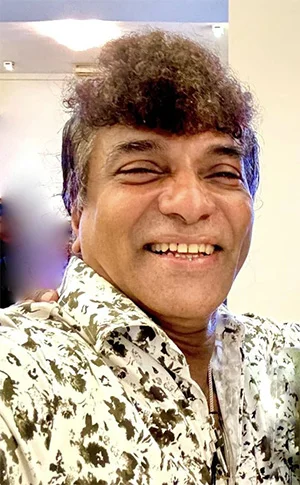
Melantha Perera: Invented a notation
system for the guitar
“On 7th June, we are opening up for the public to come and witness their talents, and I want to take this product island-wide, giving the message that we can do it, and I’m hoping to create a database so there will be a following. Initially, we would like your support by attending the show.”
Melantha says he didn’t know what he was getting into but he had confidence teaching anyone music since he has been in the scene for the past 45 years. He began teaching in 2015,
“When I opened my music school, Riversheen School of Music, the most challenging part of teaching was correcting tone deaf which is the theoretical term for those who can’t pitch a note, and also teaching students to keep timing while they sang and played.”
Melantha has even invented a notation system for the guitar which he has named ‘MelaNota’. He has received copyrights from the USA and ISO from Australia, but is yet to be recognised in Sri Lanka.
During Covid-19, Melantha showcased MelaNota online and then it was officially launched with the late Desmond De Silva playing one of his tunes, using MelaNota.
Melantha says that anyone, including the visually impaired, can play a simple melody on a guitar, within five minutes, using his notation system.
“I’ve completed the system and I’m now finalising the syllabus for the notation system.”
Melantha has written not only for the guitar, but also for drums, keyboards, and wind instruments.
For any queries, or additional information, you could contact Melantha at 071 454 4092 or via email at thebandbrightlight@gmail.com.
-

 Business3 days ago
Business3 days agoSri Lanka’s 1st Culinary Studio opened by The Hungryislander
-

 Sports4 days ago
Sports4 days agoHow Sri Lanka fumbled their Champions Trophy spot
-
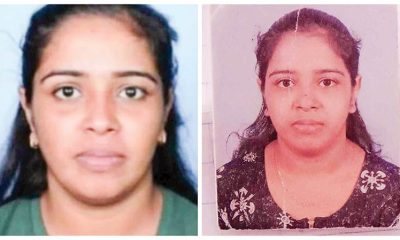
 News6 days ago
News6 days agoKiller made three overseas calls while fleeing
-
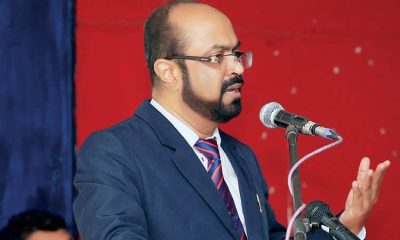
 News5 days ago
News5 days agoSC notices Power Minister and several others over FR petition alleging govt. set to incur loss exceeding Rs 3bn due to irregular tender
-
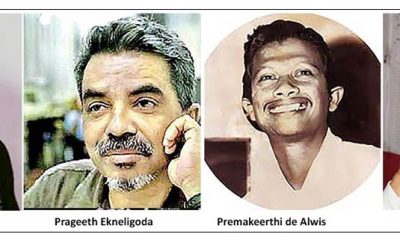
 Features4 days ago
Features4 days agoThe Murder of a Journalist
-
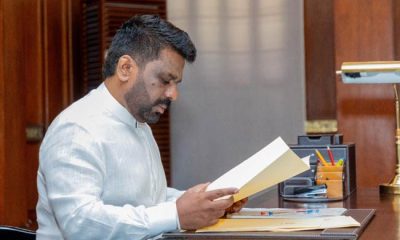
 Features4 days ago
Features4 days agoExcellent Budget by AKD, NPP Inexperience is the Government’s Enemy
-
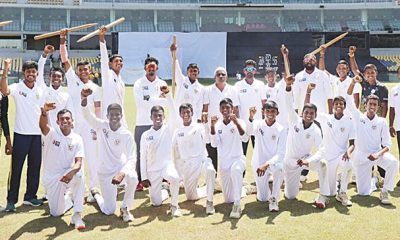
 Sports4 days ago
Sports4 days agoMahinda earn long awaited Tier ‘A’ promotion
-

 News5 days ago
News5 days agoMobile number portability to be introduced in June

